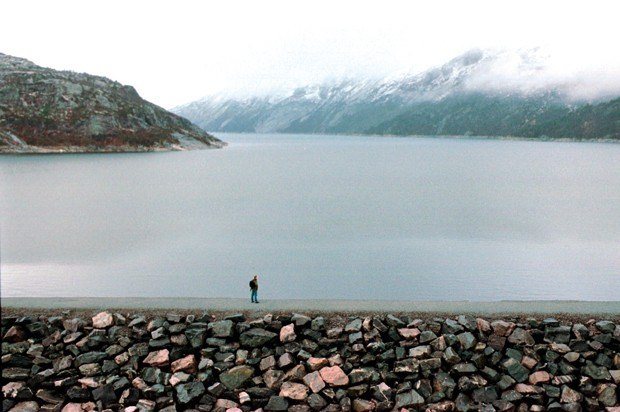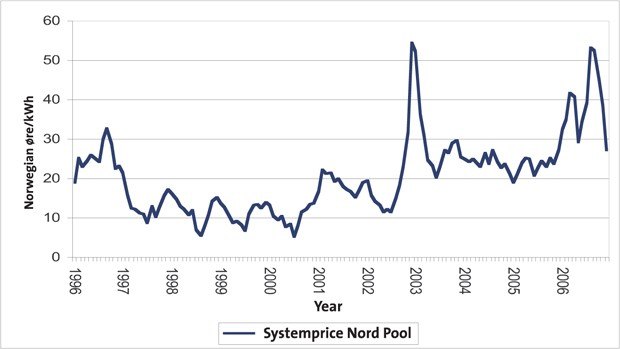
Hydro magazine at Bykle in southern Norway. Photo: SCANPIX
In 2006 the average electricity price on the Dutch power exchange (APX) was 9.6 euros/MWh, or 20 percent higher than the average system price at Nord Pool (APX at 58.25 euros/MWh compared to Nord Pool Spot at 48.64 euros/MWh.)
A higher degree of integration may lead to more correlated Nordic and European electricity prices, and even increased prices in the Nordic area. On the other hand there are several new generation facilities under construction in the Nordic countries. New generation increases supply, and will in general put negative pressure on electricity prices.
Future electricity prices will also of course be influenced by the costs of CO2 emissions and other climatic-motivated additions. Similar effects will come from fuel prices. If they increase electricity will also become more expensive.
Wind power remains volatile
If wind power energy production increases its share of the Nordic electricity market, both the supply and the price of energy may become more volatile. The reason here is simple. Wind power generated electricity is most efficient when the winds are neither too weak nor too strong. In others words, the output of this type of electricity is much more difficult to regulate than that for instance of hydro-power or traditional fuels. On the other hand, the inherent flexibility of hydro-power contributes to a smoothing of possible variations in market supply.
If a wind power station has been established it will remain profitable to maintain as long as the selling price of the energy generated is higher than the cost of facility maintenance. But as the Nordic electricity market is diversified, and wind power generation accounts for a small part of the total Nordic generation capacity, increased wind power is not likely to have a major impact on overall Nordic electricity prices. However, prices in regions with a relatively high share of wind power production and limited transmission capacity may become more volatile.
Hydro-power is easy to regulate
An overview of the production of electricity in the Nordic area would see hydro-power dominating in mountain-areas, that is, in most of Norway and Northern Sweden, while in the lowlands, that is, Southern Sweden, Denmark and Finland, electricity is mostly generated from nuclear, gas or coal (thermal).
The supply of water is easy to regulate and therefore the cost of changing the output of hydro-generated electricity is relatively cheap. Power stations run on nuclear, gas or coal on the other hand, are most profitable if they run at an even speed. To change their output-volumes is thus rather costly and can be compared to constantly altering the speed of a running car. There are always peaks in electricity usage, which is higher during the day, particularly in the mornings and afternoons, as compared to during the night. Colder winter days also see increased usage.
"Lowlands-producers"
For what we term above the 'lowlands-producers' it will quickly become unprofitable to cater for the ups and downs in consumption. Rather they will buy hydro- generated electricity for the peaks. This costs them less than to attempt to alter the capacities of their power plants run on gas, coal or nuclear fuel. There is then usually a night-time power-surplus available in the lowlands. This is bought by the hydro-producers in the highlands, as at night they can purchase it at a lower price than it would cost them to increase their own hydro-power generation.
On the other hand, if rainfall is extensive and the magazines are full, it is better to sell hydro- generated electricity at low prices, rather than just letting water run through for nothing. Such a situation will normally also result in fewer requests for energy from the lowlands, i.e. from nuclear, gas or coal.

Development of the Nordic system price 1996 – 2006.
By Håkon Mørch Korvald (left) and Tor Arnt Johnsen, Norwegian Water Resources and Energy Directorate - www.nve.no